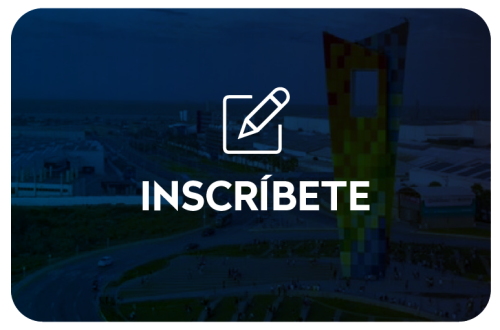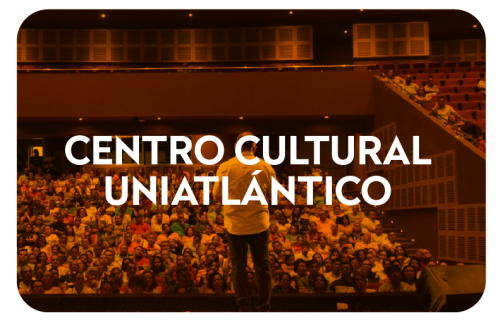VI Congreso Internacional de Neuropedagogia: Innovaciones Didácticas Y Procesos De Inclusión Educativa CINP 2025
22 de mayo de 2025 2025-05-22 12:13VI Congreso Internacional de Neuropedagogia: Innovaciones Didácticas Y Procesos De Inclusión Educativa CINP 2025
VI Congreso Internacional de Neuropedagogia: Innovaciones Didácticas y Procesos de Inclusión Educativa Cinp 2025
La Sexta Edición del Congreso Internacional de Neuropedagogía: Innovaciones Didácticas Y Proceso de inclusión educativa VI CINP – 2025, corresponde a un evento de extensión y apropiación del conocimiento de la Facultad de Ciencias de la Educación que consolida el dialogo abierto y fructífero entre las ciencias de la educación, las ciencias humanas y la neurociencia, para la compresión, caracterización y prácticas exitosas desde acciones educativas e investigativas que reflexionan sobre los niños, jóvenes, adultos y personas mayores que participan de procesos de educación en búsqueda tanto de su formación como del desarrollo de competencias profesionales para pensar y plantear alternativas efectivas para la construcción de una sociedad cada vez más participativa e inclusiva.
Desde la reflexión neuropedagógica sobre los procesos de educación se plantean diferentes respuestas efectivas a las situaciones-problema propios del acto educativa conjugando los aportes d ele neurociencia, la educación y los saberes de los profesionales para representar desde la disciplina innovaciones didácticas orientadas desde el diálogo fructífero y basado en la evidencia de la neurociencia.
En esta versión La Facultad de Ciencias de la Educación posibilita el dialogo interdisciplinar y consolidar acciones que permitan a la Universidad del Atlántico mantener el dialogo e interacción entre la académica con diversos actores sociales para afianzar su propósito de contribuir en la relación permanente con el desarrollo social, cultural, científico, político y artístico del nuestro país, la región caribe y los países participantes del evento.
Se mantiene la relación y respaldo del Consejo Mundial de Académicos e investigadores Universitarios COMAU -LATAM y sus miembros a la actual versión y con ello, afianzar el debate académicos e impulsar productos investigativos en pro del bien común. Se unen a la convocatoria la Catedra Internacional “Infancia” e investigadores de diferentes países como España y Cuba.
La Neurociencia fundamenta las particularidades de los actores en sus procesos de desarrollo, aprendizaje y relaciones, permitiendo una mayor pertinencia en la planeación pedagógica y didáctica para proponer metas de formación y transformación propios de la dinámica humana de educación.
La inclusión como reto del aula y los procesos sociales actuales, requiere diálogos abiertos entre las diversas disciplinas para confluir en proceso de crecimiento y participación de nuestras sociedades y actores para contribuir en procesos que otorgan bienestar, crecimiento y desarrollo integral.
Es por ello, que teóricos, investigadores e instituciones nacionales, regionales e internacionales se unen para dar apertura al debate que puede dar sentido a mejorar las prácticas profesionales y humanas relacionadas con los agentes implicados en la inclusión, desde la relación dinámica y comprometida de los aportes de la neurociencia y su abordaje neuropedagógico de reflexión de la educación y posibilitar el conocimiento y posicionamiento de propuestas de innovación didáctica para una educación con más calidad, equidad e inclusión.
Costo de Inscripciones
Locales y nacionales en Banco Davivienda según datos específicos para este evento.
Para Internacionales, dependiendo de su país de origen, se le envíe guía detallada el proceso para el depósito respectivo.
Estudiantes de pregrado y posgrado nacionales o internacionales (con acreditación de estudiante):
U$70 dólares americanos o su equivalente en pesos colombianos- Primer plazo hasta 1 de abril de 2025
U$100 dólares americanos o su equivalente en pesos colombianos hasta 25 de mayo
Profesionales nacionales o internacionales:
U$100 dolores americanos, primer pago con descuento hasta el 1 de abril de 2025
U$120 dólares americanos o su equivalente hasta 25 de mayo de 2025
Todos los participantes de trabajos deberán realizar el pago de la inscripción
Cuenta de Recaudo
Las inscripciones para el evento se realizarán exclusivamente en la siguiente cuenta institucional y su recibo de pago deberá ser colgado en el link de inscripción para oficializará su proceso de acceso al evento.
- El pago por derechos, inscripción en el congreso hasta 1 de abril 2025, valor con descuento.
- Pago tarifa sin descuento hasta el 25 de mayo de 2025.
Entidad bancaria: Banco Davivienda.
Tipo de cuenta: Cuenta de ahorros
Número de cuenta: 482800028714
Nombre: Fideicomiso Universidad del Atlántico.
NIT: 800182281-5





